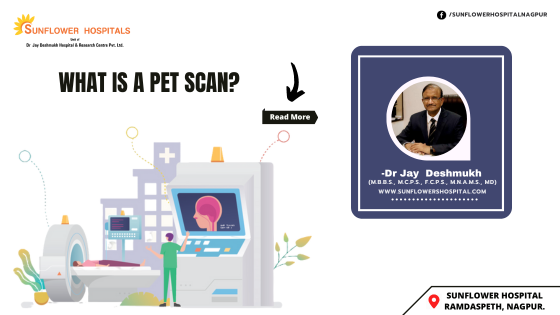Why is a PET scan performed?
It is done to evaluate the function of organs, such as the heart or brain. However, the most common use of PET is in the detection of cancer and the evaluation of cancer treatment.
What are the other common specific reasons for PET scans?
It is used to find the cause of dementia and other Euro• logical disorders like Parkinson’s disease, and Hunting• tons disease, to assess detection of recurrence of tumours earlier than other diagnostic tests, and to assist staging of cancers like lung cancers or stomach or pancreas cancers. To assess heart muscle blood flow and thus to understand the best therapy, to assess response to cancer therapy, and detect the spread of cancer to other parts of the body from its origin, a PET scan becomes an important tool.
How is the PET scan performed?
It is an outdoor procedure. The patient is asked to remove clothing and jewellery. A gown is provided. The urinary bladder is emptied. The intravenous line is secured. The radionuclide dye is injected intravenously. It is allowed to concentrate in the tissues for 30 to 60 minutes. This is not hazardous to other people. After this, the scan begins. The scanner moves slowly over the body part being examined. The intravenous line is removed after the scan. The patient spends approximately 3 to 4 hours at the centre.
How does PET work?
PET works by using a scanning device, a large machine with a hole in the centre, to detect photons emitted by a radionuclide in the organ or tissue to be examined. The radionuclides used in PET are made by attaching a radioactive atom to chemical substances that are used naturally by the particular organ for its metabolism. Commonly, a radioactive atom is applied to glucose to create FDG, flurodeoxyglu-cose. Other radionuclides may be oxygen, carbon, nitrogen, or gallium.
What do you need to know before a PET scan?
You need to know if you had a bad allergic reaction Positron emission tomography (PET) is a type of nuclear medicine procedure that measures the metabolic activity of the cells of the body tissues. PET is a combination of nuclear medicine and biochemical analysis. It helps to assess the biochemical changes taking place in the body. PET detects metabolism within body tissues.
Before, if you have diabetes and your recent blood glucose, whether on medication including vitamins and herbal treatment if you are pregnant or breastfeeding and if you are afraid of closed spaces a condition known as claustrophobia.
Is a PET scan better than MRI?
PET scans show changes in your cells. This is where the disease originates. Mills are used to detect larger changes in the organs or tissues. However, each has its importance and your doctor will tell you what is most appropriate for you.
What is the disadvantage of a PET scan?
It can give false results, specifically in diabetics if blood glucose is uncontrolled. It is not done at least 3 months after surgery. High blood glucose or insulin levels can adversely affect the test results.
Will a PET scan show all cancers?
Other tests including blood tests are required to diagnose certain cancers. PET suggests if the tissue is metabolically active. It can be active in certain infections. PET is not a magic bullet to diagnose all medical conditions. It is most widely used to diagnose if certain cancers are responding to treatment and whether they are spreading.
What are the risks of PET scan?
Any exposure to radiation carries a small risk. However, the exposure to radiation by the small dose of radioactive material used is negligible. However, pregnancy and breastfeeding are contraindications.
What are the limitations?
PET scan does not give a diagnosis at the cell level. Hence, a biopsy or any other procedure to have a pathological diagnosis is necessary to diagnose a particular malignancy. A PET scan may be necessary to localise a particular disease and helps to find a tissue for appropriate diagnosis. PET Scan through an expensive test guides the treating doctor to diagnose and as• says the spread of various medical conditions including malignancy. Response to surgery, chemotherapy, or radiotherapy or recurrence of cancer is best assessed by PET scan.
Author: Dr Jay Deshmukh
Dr Jay Deshmukh is Chief Physician and Director, Sunflower Hospital, Nagpur Honorary Physician to Honorable Governor of Maharashtra and PondicherryCentral. Dr Jay Deshmukh is an M.B.B.S., M.C.P.S., F.C.P.S., M.N.A.M.S., MD From Internal Medicine – Bombay and New Delhi.


